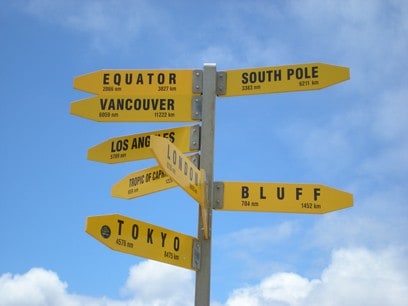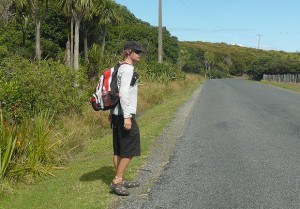Last Updated on October 10, 2024 by Aswetravel
Pros and Cons of Driving vs Flying – If you’re umming and ahhing over whether you should drive to your holiday destination and make a on the road trip of it! or fly, we’ve assembled a list of pros and cons of Driving Versus Flying to help you make your decision.
Pros of Driving vs. Flying
You’re in charge.
By and large, people enjoy their holidays more when they have greater freedom.
It’s the impulsive choices that make a vacation truly special.
With a car in your possession, you’re not lumped with a set itinerary – you can find your own fun and take things at your own pace.
No airplane food.
Although it’s not always possible to find a good eatery on the road, you’ll almost certainly do better than the meals you get mid-flight; especially if you want a snack – on an airplane, you’ll end up shelling out a small fortune for a Snickers bar.
Better sights and discoveries.
Driving through countries is an immersive experience that broadens your horizons.
You’ll make unexpected discoveries on the way and get to see some fantastic scenery.
You can take as much luggage as you like
Flight companies charge a ridiculous amount of money for holiday bags and you won’t need to deal with stress at airports.
On the flipside, you can fill your car to the brim with suitcases, if you like, and you won’t have to pay a penny.
You may be able to save money, if you’re going with a large group.
Total radio control
You can sing along to your favorite songs or listen to a story tape comfortably.
Word to the wise: take someone you can stand for long periods of time, otherwise, you’re going to be at each other’s throats…and it isn’t going to be pretty.
Driving through a country is a great way to become close to someone you’re travelling with, but expect silly arguments about muffins or who gets to drive next.
Easier to Pack
Flying comes with its own special set of packing considerations. Generally speaking, you’ll be much more constricted when it comes to space, due to the requirements associated with luggage and carry-on. With air travel, you’ll need to focus on bringing portable, space-saving alternatives.

Pros Flying Versus Driving
Driving takes a lot of time
Normally, you do spend many hours at the airport (plus flight time), but driving is a real time sink, and if you just want to get to the beach as soon as possible, driving may not be for you.
Driving is Exhausting
Driving for long periods of time really takes it out of the old girl, so you have to make sure that your car is in top nick before you try to take on an entire country. Unless you’re road tripping in a small country like the UK, it’s likely you will be on the road for a long time.
You could wind up with quite a few garage bills if you’re not careful.
Driving Can Be Expensive
You have to put in the driving hours to get to your destination. Driving can be expensive, with fuel charges and parking.
You don’t want to get trapped in adverse weather conditions. You could get into an accident and you’ll need to fork out for motor lawyers.
Driving is More Dangerous
It may not be something you want to think about, but there’s no arguing the fact that driving is much more dangerous than flying. And although a “fear of flying” is far more common than a fear of driving, the stats consistently show that flying is a much safer alternative.
So if you’re worried about the dangers of flying, you can rest assured that it is one of the safest forms of travel. A plane crash is an exceedingly rare occurrence when compared against automobile fatalities.
Of course, this isn’t something you really want to consider when planning any form of travel. As long as you drive defensively and attentively, you can be confident that you are doing everything in your power to make the road safer for yourself and those around you.
Is Flying Safer Than Driving
You can just sit back and relax
A major appeal of flying is that you can just kick back and let someone else do the work for you! Plane travel takes much of the hassle out of the “travel” part of your vacation. No more planning routes, no stopping for fuel, and no getting lost.
With air travel, you arrive at the airport, follow instructions, and kick back for the duration of the flight. You can sleep, eat, watch movies, or have a cold one!
Flying is definitely preferred by those who want to “turn their minds off” on vacation. Is flying safer than Driving
You can go much further faster!
An obvious advantage of plane travel, but we had to mention it somewhere. Planes go much faster, can take you much further, and you can reach destinations that wouldn’t be possible otherwise. If you’re planning to go overseas, across countries, or thousands of miles away, then driving may simply not be an option!
Perhaps you should develop an upper limit for how far you are comfortable driving on vacation. This might help make your decision much easier, and you’ll be able to set a standard for when it’s time to simplify the decision by booking a flight.
Additionally, because flying is faster, it opens up more time to do the things you actually enjoy on your vacation! You don’t want to waste half your holiday just getting there.
Cost of Driving vs flying
Expensive
Cost of Driving vs flying – Generally speaking, flying will be the more expensive travel option. This is especially true when you consider the 1:1 time spent on each mode of transportation. And while it is generally true that flying is more expensive, you still need to consider a multitude of factors.
For example, reaching far away destinations are more economical on planes. Especially when you consider that reaching said destinations might be impossible to reach via car. So while it’s easy to say that flying is “more expensive”, it might end up being the more sensical option when all things are considered.
Environment
Generally speaking, driving is the “greener” option compared to flying. Planes produce many more carbon emissions, because they are such massive, powerful machines. Here’s a tool for calculating how many carbon emissions you are actually “creating” per flight.

Fear of Flying
People can love traveling, but have a deep fear of flying, Overcome your fear of flying.
Some dislike it more than others, but I’m sure that we all have that thought crossing our minds that an accident could happen.
For some people, the thought just passes quickly through the mind, while for others the thought won’t leave them until they have landed safely.
The fear of flying is actually more common than people think, and can be a real pain.
These tips and tricks will help you start to overcome your fear of flying and be able to get back on a plane.

Prepare
Other than preparing mentally yourself, you also have to prepare those around you.
If you’re very scared of flying, let the attendants know about it.
They will be more than understanding, and they will do everything they can to make your journey as comfortable as possible and try to make you feel that you’re in safe hands.
Before the flight, you can also politely ask if you can meet your pilot. The pilot can tell you what to expect on your particular flight.
Knowing who is flying you might make you feel safer as well, and make it easier to trust him/her.
Another side note that can make you feel any safer knowing is that pilots are known to be the biggest control freaks of all!
Breathe
A smart, quick and effective way to calm your nerves on a plane to eliminate fear of flying is to do some deep breathing.
There are many ways to do this, but the importance is that you breathe deeply and relax.
Use This Routine To Keep You Relaxed
- Close your eyes.
- Put your tongue on the roof of the mouth, inhale through the nose as deep as you can (10 seconds).
- Hold for 2 seconds. Exhale slowly while drawing the number 3 three times in your mind.
- Do this again, but imagine drawing number 2 three times – finally do this a third time, imagining drawing number 1 three times.
Remind Yourself Of The Four False Facts
We’ve all experienced our minds getting swept away and blowing things out of proportion, starting to picture accidents in the head.
When your mind starts to mess with you and you get these uncomfortable thoughts that makes you nervous.
Below are some typical and common things people worry about (including myself), and after some research I found that there is no need to worry:
What if there is something broken on the plane?
There are aircraft mechanics making detailed inspections between every flight, and they repair broken parts as needed.
The mechanics never settle for a “quick fix”, but make sure to always do a very careful job, anything else is forbidden by strict laws – and nobody would want to stand for having done a bad job.
What if the plane crashes?
Flying is safer than driving, and is actually quite safe compared to most forms of travel in general. The statistics of accidents are very low, and keep in mind that almost 30,000 people are up in the air at this very minute.
Every single flight is planned in such a way that if an engine was to fail, the plane must still have enough performance to fly safely.
Pilots are trained to handle engine failures in every phase of flight.
What if the plane engines stop in an air pocket?
A very common thing that worries people and is the reason to many people’s fear of flying is “air pockets”. Have you ever felt as though the plane fell into a pocket?
I’ve heard rumors that the plane engines can stop spinning if the air pocket is too big, or if there are too many of them. This, however, I have now understood to be a myth.
There are no such things as air pockets, they are a complete myth. There is always air for support.
Have you ever walked down the street and all the sudden found yourself in an air pocket where you can’t breath?
What if the plane all the sudden just stops working and falls off the sky?
Planes simply cannot do this.
There is always several backup systems, and even if none of them work (which is very unlikely), the plane can still glide for up to 100 miles from cruise altitude of 30,000 feet.
In fact, it’s actually pretty common that they don’t use the engines at all at times and let the plane glide to save fuel.
Learn To Let Go & Trust
There isn’t much more you can do now than to just relax your mind and body. Holding tightly to the armrests does nothing to stabilize the plane.
The plane is already designed to fly steady. When you find yourself tensing up, let go.
Pros and Cons of Driving vs Flying
There you have it, a comprehensive list of the factors to consider when choosing whether to drive or fly. It’s a lot to consider, and your ultimate decision will depend on many factors which are specific to your vacation plans. How much do you want to spend? How long do you want to spend driving? Where are you going?
These are all relevant considerations, and there are no right or wrong answers. Use our factors above, and compare them to your own preferences. You can make the best decision for the ultimate vacation experience!
How To Get Through Airport Customs
At some point in your life, you have probably found yourself behind one of those people who take forever in security due to poor preparation or, even worse, you have been one of those people yourself.
Although airport customs and security will never be a fun experience under the best of circumstances, there are several tips and strategies which you can implement in order to make the process an easier one.
So next time you are jetting off, spare a thought for your fellow travelers and use these tips to make your journey, and that of others, a stress-free one.

Pack Lightly & Smart
You should make sure that you are fully aware of what you can and cannot carry onto the airplane. This can be found on the TSA website.
Items should be neatly and clearly labeled within the suitcase and a plastic bag should be used for liquids and toiletries and should be placed in an outer pocket so that they can be easily accessed by security.
Make sure that the liquids are in bottles that are 3 ounces or less per TSA guidelines. Packing your bag in an organized manner will make the process of searching luggage much quicker and hassle-free for both you and security.

Be Prepared
Have your boarding pass and ID in hand and head to the line that is shortest. There is often a security line or two that many people don’t go to because they erroneously think that the line is only for one airline.
Place everything that you have in your pocket into your jacket or bag and then remove that item. Only keep your ID and pass with you.
If you are carrying a laptop, unzip the bag. Once you have passed the point where the ID is checked, remove your shoes.
Staying one step ahead of everyone else will help you to breeze on past those who are still rummaging in their pockets in order to collect all their change.
Pay Attention and Follow Instructions
Pay close attention to any instructions that you are given as well as the mistakes that those in front of you make. Learn from them and be prepared to avoid those mistakes that they make when it is your turn.
This way, you will be able to make the process a lot simpler when it comes to your turn. If you are required to go through additional screening, don’t make a fuss.
Just do it!
Purchase a TSA-Approved Bag for your Laptop for US Travel
As long as your purchase a bag that is approved by the TSA as “checkpoint” friendly, you will not be required to remove the laptop from the bag.
Make sure that you also label the laptop as they often get left behind due to poor identification. Although options for TSA-approved bags are still limited, there are some options which are available, the cheapest and simplest of which is the laptop skin.
Avoid Traveling During Busy Periods
Although this is not always something that can be planned for, peak travel times should always be avoided if possible. These peak times typically include the hours between 6:30 AM and 9:30 AM and 3:30 PM and 7:30 PM.
Avoiding these hours can help in getting through the security and customs much more quickly.
Some times throughout the year, such as sporting events including the Olympics, holidays, and spring break times, will be inevitably bad so you should prepare yourself to be agitated during this time and plan to be there earlier than normal so that you ensure you will not miss your flight.
The process of going through security and customs can be vexing but need not be the tortuous experience that many claim it to be. Be prepared and don’t be afraid to bypass people who aren’t.
Yes, we are an organized society who lives by the “line”. And, yes, we are programmed to think that “cutting” is inexcusable.
However, walking past someone who simply isn’t ready will more than likely make the security people happier than they otherwise would be if they had to waste time waiting for the person who is still rooting around for their ID.

Avoid the bling in Airport Security
Do your best to leave your jewelry at home or pack it separately when you fly.
Having to deal with a watch, bracelets, a necklace, rings, earrings and other items will slow you down when going through Security, not to mention that you may lose something in the process!
You can also just go for non-metallic options that will allow you to zip through in fashion.
If you really need your bling upon arrival, just pack it in your bag and put it on as you reach your final destination.
Keep your electronics at hand
TSA has become a little more relaxed when it comes to electronics. Mobile phones and iPads can be kept in your bag and only laptops need to be out of their case and in a separate bin.

Keep your laptop in a case that’s easy to handle – don’t stuff it at the bottom of your carry on and place it where it can be reached easily.
Pockets are your worst enemy
When you’re traveling for hours, its so easy to end up with pockets stuffed with odd items such as coins, tweezers, earrings, pens, rings, memory sticks, etc.
If you’re able to dress in items that don’t have pockets, all the better. Nothing worse than being sent back to clean out your pockets into a little bin.
Last but not least, read up on the latest rules on liquid items, this will help you know which toiletries are good to carry with you (or not). Patience is key to ensuring a smooth process – and so it paying attention.
Do your homework, keep an eye out for signs, and listen to the TSA personnel… put on a smile and get on with your day!
(Airport Customs Problem Free Photos 1, 2, 3 )
(Overcome your fear of Flying Photos 1, 2, 3, 4, irishflyguy – traftery – cdharrison ) (1 – 2 – 3)




